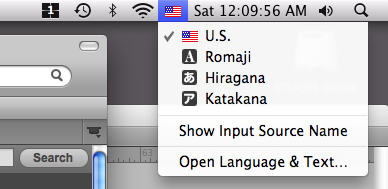I thought of a few other things with respect to 2010 goals …
Japan – One of my travel goals this year is to visit Japan, more specifically Kyoto and/or Tokyo. Although with the prevalence of shinkensen (bullet trains), I’ll probably visit both! Japan is somewhere I have always found intriguing and strangely enough, one place that I feel some remote “connection” to. While my initial interest in Japan was centered around their advanced railway system, the first chapter in the book I am reading now – “Japan Rising” – seemed to suggest an almost surreal tie to my own personality – a blend of opaqeness, paradoxes, power and purpose. While I have much more to read, I may explore this connection in more depth in a future post.
Since travel to Japan will likely happen in the summer, my primary goal now is to start learning the written and oral Japanese language. Today, I purchased Rosetta Stone’s Japanese Level 1 as it is highly rated and thus a good starting point. I started working on it this evening and am very impressed with the simplicity of the interface and overall design. After only fifteen minutes in using the software, I am actually able to comprehend simple sentences! Future posts will be designed to reinforce what I have learned on my own or through the course.
To provide some foundational context, I learned there are four “writing systems”: Kanji, Hiragana, Katakana and Romaji. Here is a brief description of each writing system from Rosetta Stone:
Kanji (漢字) is used for nouns, parts of adjectives and verbs, and Japanese names. Hiragana (ひらがな) is used for words that don’t use kanji, in certain word endings, and in place of kanji characters that are difficult to read. Katakana (カタカナ) is used for foreign words, countries, names, and technical words. Romaji, which uses the Roman script, is often used for acronyms, company names, foreign words, or as a transliteration of Japanese characters. Romaji allows learners of Japanese to read Japanese without learning the characters.
Since I am interested in learning the kanji writing system, I will primarily use Rosetta Stone with this method, but will switch to romaji if I can’t grasp what is being said – i.e. for me, it’s sometimes easier to read what is being said vs. a sole reliance upon the audio.
I also configured my Macintosh to switch between U.S. and hiragana (I don’t know exactly why kanji is not listed) through the System Preferences > Language and Text option. Once configured, you’ll see the relevant language icon located at the top right-hand corner of your screen – as shown here:

When I switch to the hiragana input type, I can start typing in that character set using the set of Japanese typefaces that are installed within Mac OS X. For example, these are the vowels a, e, i o and u: あえいおう. I think it will be good experience to learn how to enter these characters as well as to physically write the kanji / hiragana symbols by hand.
Edward Tufte – In my earlier post, I mentioned that I was going to focus more of my attention in the information design realm. Edward Tufte is considered a pioneer and leader in this space, and thus I recently acquired two of his books – Beautiful Evidence and Envisioning Information. While I have considerably improved upon my graphic and information design skills over the past decade, I think it’s appropriate to take my development to the next level through books such as this. I’ve updated my current reading list to include these new additions.
AdrianDaniels.com – With hosting plan finalized, I spent the past week refining the design and ended up taking a completely different approach to the design overall. I recently posted a placeholder page which represents the overall “look” of the site – the lettering shown is “Adrian” in katakana lettering. If you are interested, you can visit the web site where I was able to obtain this translation. While the design is nearly complete, I still have a fair amount of work to do in terms of the Flash conversion, thus I’ve set a deadline of February 1 to release the final version.
Incubator – You may have noticed that I’ve changed the title of this blog from “Big Generator” to “Incubator”. This is actually part of a larger strategy which will be discussed in the upcoming weeks. In any event, you can now visit this blog via the new URL which is http://incubator.adriandaniels.com. You can also visit my other site via http://microcosms.adriandaniels.com. If you have a WordPress blog and are interested in taking advantage of this subdomain mapping, visit this link for details.










